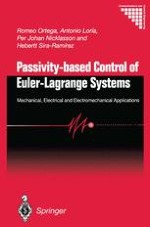The essence of this work is the control of electromechanical systems, such as manipulators, electric machines, and power converters. The common thread that links together the results presented here is the passivity property, which is at present in numerous electrical and mechanical systems, and which has great relevance in control engineering at this time. Amongst other topics, the authors cover: Euler-Lagrange Systems, Mechanical Systems, Generalised AC Motors, Induction Motor Control, Robots with AC Drives, and Perspectives and Open Problems. The authors have extensive experience of research and application in the field of control of electromechanical systems, which they have summarised here in this self-contained volume. While written in a strictly mathematical way, it is also elementary, and will be accessible to a wide-ranging audience, including graduate students as well as practitioners and researchers in this field.
